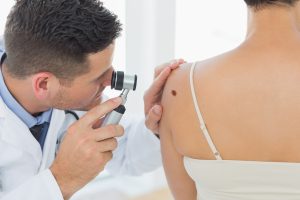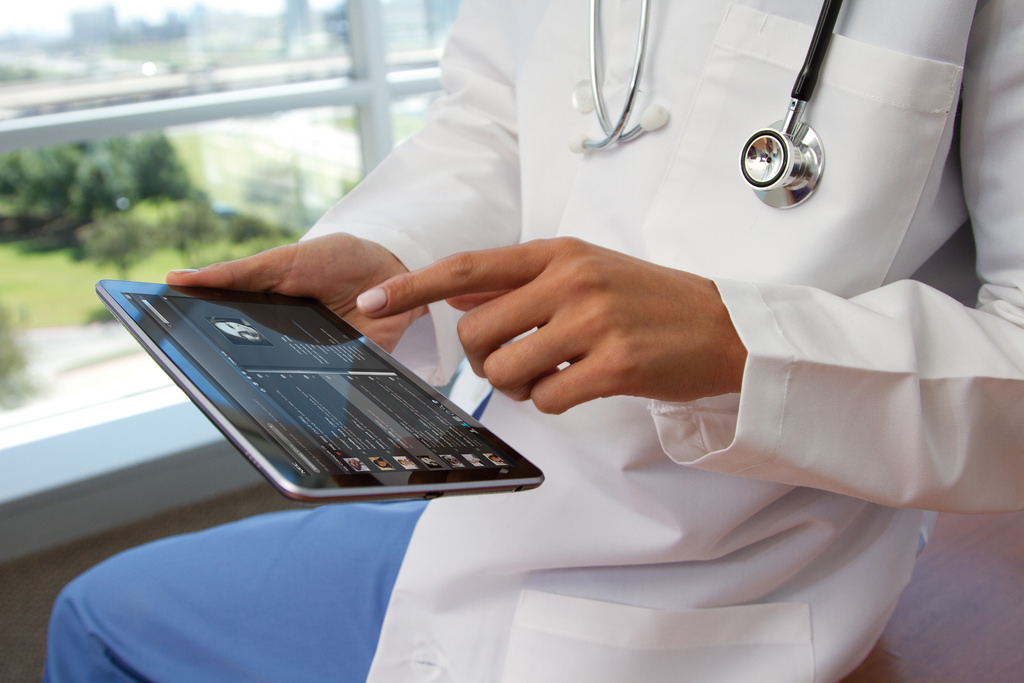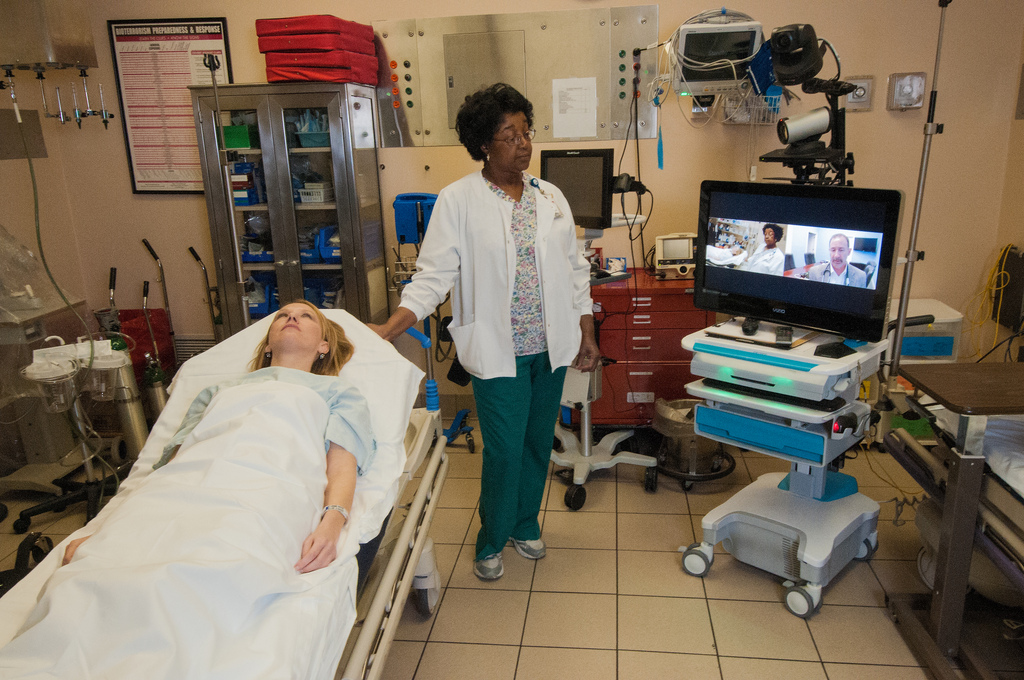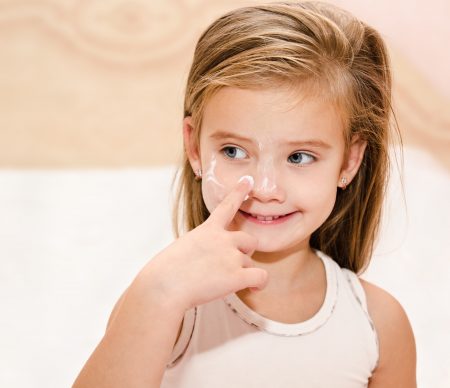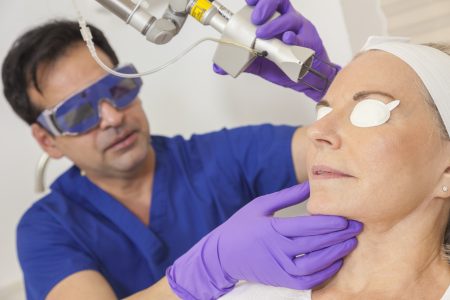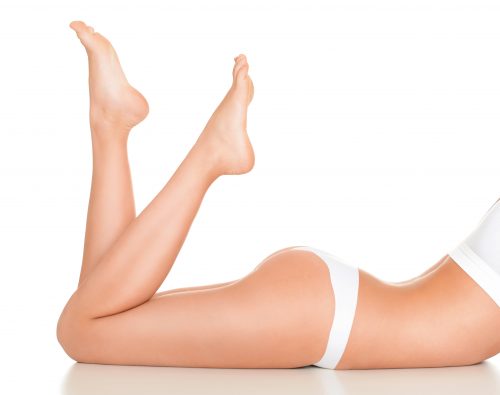The Importance of Receiving Annual Skin Checks
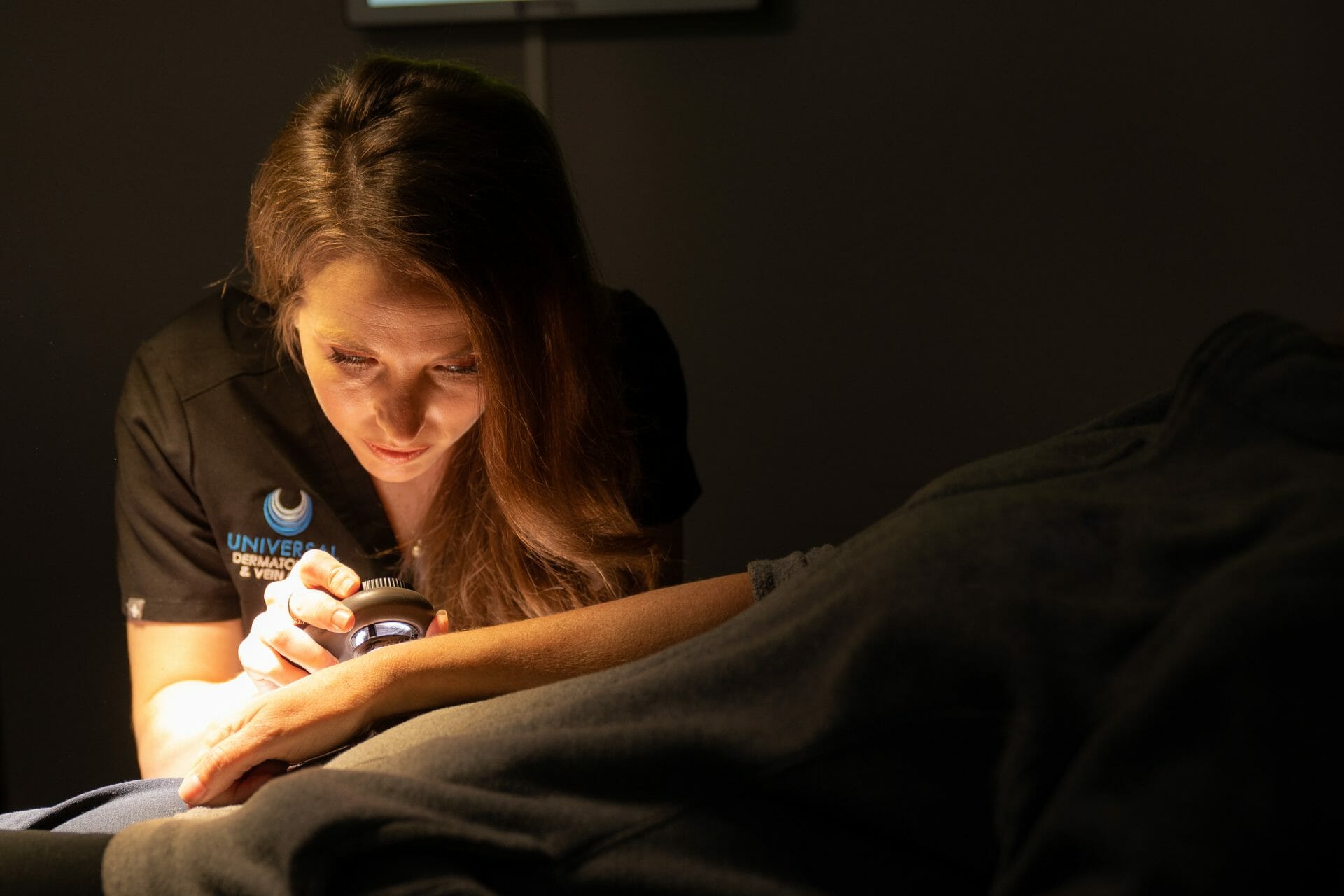 Many people undervalue the importance of skincare and skin checks. However, the fact remains that our skin is our first point of contact with the outside world and may require extra attention. Just as there are many layers of the skin, there are also many layers and levels of skincare. The first level of skincare is taking care of your skin from the inside out. This includes eating and drinking well, resting sufficiently, and exercising regularly.
Many people undervalue the importance of skincare and skin checks. However, the fact remains that our skin is our first point of contact with the outside world and may require extra attention. Just as there are many layers of the skin, there are also many layers and levels of skincare. The first level of skincare is taking care of your skin from the inside out. This includes eating and drinking well, resting sufficiently, and exercising regularly.
Skincare Inside and Out
In many ways, the old adage, “you are what you eat” is true. What you eat and drink will show up on your skin. Do your best to stay away from processed foods and sugary drinks. Drink lots of water, eat fruits, vegetables, lean meats, and exercise regularly.
In addition to taking care of your skin from the inside, there are lots of things you can do to take care of your skin on the outside. With the right topical care and necessary professional treatments, you will be able to have youthful, glowing, and healthy skin. The first step in good external skincare is, of course, scheduling an annual check with your dermatologist.
The Importance of Annual Skin Checks
A regular skin check is just as important as an annual physical. It is easy to take the condition of your skin for granted, especially because we are used to looking at it every day—its condition is our normal. However, there are many conditions that can go undetected. With an annual skin exam, you are able to take the necessary corrective and preventative steps for conditions like these.
For example, one in every five Americans will develop skin cancer in their lifetime (AAD). One of the reasons for this is the inability to identify early symptoms and warning signs. When detected early enough, skin cancer can be extremely treatable. Annual skin checks can make a huge difference in treating this condition effectively.
Taking Care of Your Skin Between Annual Skin Care Exams
Naturally, it is expected that you will continue to take care of your skin between annual checks. Here are two of the most important aspects of skincare that you should do daily.
Moisturizing
Moisturizing the skin regularly is an often overlooked part of skincare. However, it is one of the most recommended practices in dermatology. Keeping your skin properly moisturized can help guard against certain diseases and skin conditions, so it is always recommended—especially in the summer and winter months when the weather can be particularly harsh and drying for the skin.
Wearing Sunscreen
Sunscreen, like moisturizers, is another often ignored skincare habit. UV rays have been directly linked with skin cancer. As such, it is important that you protect yourself and your skin. A sunscreen with SPF 30 has been proven to effectively block out around 97% of the sun’s rays from harming the skin.
Get Professional Dermatology Care Today
It is easy to think of dermatologists as the doctors you turn to when something is wrong. However, you shouldn’t wait until there is a problem to schedule an appointment. Dermatological care is an important part of overall health. Therefore, whether you are noticing symptoms of certain conditions or seem to have clear skin, annual checks and skincare treatments by professionals is important.
Universal Dermatology & Vein Care can provide comprehensive dermatology care for your skin, hair, and nails. We have a friendly and experience team waiting to answer your questions and provide you with any treatment options you may need. Contact us today to schedule an annual skin check!
Lear MoreHow To Have a Sweat-free Summer
It is normal and healthy to perspire in hot weather, but if you sweat excessively, this may be related to certain health conditions. Excessive perspiration is embarrassing and can make daily life difficult when you have to worry about sweat stains. There are a few basic steps that you can take to have a sweat-free summer, but you can also visit a dermatologist for professional treatment at Universal Dermatology & Vein Care in Columbus, Ohio. Here are some of the ways to combat excessive perspiration:
Change Your Daily Diet
Did you know that some foods can lead to additional perspiration, including smelly sweat? If you have a problem with too much sweating, then changing your diet is essential. The foods that can cause a smelly body odor from extra sweat include dairies such as milk, cheese, and ice cream. You will also want to avoid pungent foods such as onions, asparagus, and garlic. Moderate your consumption of salty foods that can lead to edema or water retention because when you are hot, these will cause you to perspire more.
Wear Clothing Made From Natural Fibers
Rather than wearing man-made fibers, select clothing made from natural fibers such as cotton or linen. You should avoid wearing tight garments or multiple layers of clothing that don’t permit proper air circulation. You can find garments that are made from moisture-wicking fibers so that you won’t sweat as much.
Use Specialized Antiperspirant
If you have excessive perspiration, basic deodorant or antiperspirant won’t control your sweating or body odor. You can find an antiperspirant that is made with special formulas that will control sweating in the armpits and other clammy areas of the body. It is also possible for a dermatologist to prescribe antiperspirant that is formulated for anyone with hyperhidrosis.
Drink a Lot Of Water
You might think that not drinking water is the best way to stop perspiring, but if you are dehydrated, then your sweat will have a more intense odor. If you don’t drink any liquids for several hours, your body conserves its moisture to sustain your internal organs. As soon as you drink water again, you will begin to sweat more. Remain consistently hydrated as much as possible to avoid the sudden onset of perspiration that can come from drinking water sporadically.
Eliminate Some Of Your Sweat Glands
You can visit a dermatologist to have the sweat glands eliminated in your armpits with a cool laser treatment that uses microwave technology. Mira-dry is approved by the Food and Drug Administration for treatment on the sweat glands that are located underneath the arms. This is a noninvasive treatment that is fast and painless, but you will need two Mira-dry procedures that are spaced about three months apart. The results from Mira-dry will last from two years to a lifetime.
Exercise To Lose Weight
Losing weight can help you to perspire less, so you should have a regular exercise routine. While you will sweat during exercise, you will also lose weight, and with less fat on your body, you will feel cooler in hot weather. If you have never consistently exercised before, consider a consultation with a personal trainer.
Regulate Your Hormone Levels
When your hormones fluctuate, you may perspire more. Teenagers often sweat excessively because they are going through rapid growth along with an increase in hormone levels. Women who are pregnant or going through perimenopause also have problems with excessive perspiration. If you perspire a lot without these reasons, then you might have a thyroid condition that requires specialized treatment and you should consult a doctor.
Remove Body Hair To Reduce Sweating
Shaving your legs or armpits can help you to remain cooler in the summer. While females are more likely to shave the hair from their bodies, males can also benefit from reducing their amount of body hair. You can also use depilatory creams to dissolve the roots of body hair. A dermatologist can also use electrolysis to eliminate excessive hair.
Reduce Your Caffeine Consumption
If you drink coffee, tea or caffeinated soft drinks all day, then you may have excessive perspiration that has a strong odor. Caffeine is a stimulant that increases the temperature of your body along with activating your sweat glands. If you regularly consume a lot of caffeine, it is important to ease yourself off of these drinks gradually to avoid intense cravings that will make you sweat.
Remain In Cool Environments
When you have a problem with excessive sweat, you should remain in a cool environment as much as possible. Stay in air conditioning as much as possible. You can also install dehumidifiers and circulating fans to eliminate the humidity in the air.
Quit Smoking Cigarettes
There are several reasons why cigarettes are harmful to the body. One of these ways is that they increase how much you sweat. The nicotine in tobacco triggers a chemical in your body that leads to a higher heart rate, making you perspire more. When you stop smoking, the withdrawal symptoms from tobacco will also cause excess perspiration, but this symptom will subside within a few days.
Botox Injections
Botox is an appropriate treatment for excessive sweating, but you should visit a dermatologist for this treatment. Vials of this neurotoxic protein are injected into the armpits to block the chemical messengers in the sweat glands that cause excessive perspiration. Treatment with Botox for sweating is suitable for most adults, and the benefits will last for approximately seven months.
Contact a Dermatologist Today To Learn More
A dermatologist at Universal Dermatology & Vein Care can help you have a sweat-free life this summer, call us today!
Lear MoreWhat Is Mohs Surgery?
If you are spending a lot of your time at work or leisure under the sun, your skin is at risk of overexposure to the sun’s ultraviolet rays. Your skin is liable to show the effects of this exposure over time. Those who are spending too much time on tanning beds face the same risks.
The unwanted result can be a variety of different skin cancers. Thankfully there are many treatments for this ailment that can alleviate skin problems and eliminate the risk of skin cancer. One of these treatments is Mohs surgery. Some say that it is the best of all treatments based on several reasons.
What Is This Surgery?
Mohs is a surgical procedure that can be used to remove skin cancer. There are two types of skin cancers that some believe could be best treated by this micrographic surgery. They are squamous cell carcinomas or SCC and basal cell carcinoma or BCCs. These two types are the most common of all skin cancers.
It started as chemosurgery procedure developed in the late 1930s by Dr. Frederic E. Mohs. This particular skin cancer surgery came to be regarded as the most effective treatment for SCCs and BCCs. It is the type of surgical procedure that is commonly recommended for the treatment of cancers that develop on the face, eyes, nose, ears, hands, feet, lips and genitals.
Dr. Perry Robins, a dermatologist, was the first to study the technique used in this surgical procedure. Through the efforts of Dr. Robins, the current micrographic surgery was developed and perfected.
Why Would Someone Need This Surgery?
If you or a person you know is suspected of having some skin cancer-related problems on the face or any part of the body, you are advised to consult a dermatologist or a dermatologist to have the problem area checked or removed. You may need this surgery if:
- Cancer can disfigure or deform the body part where it developed
- The cancer is growing at a fast rate
- The cancer is very large
- The edges of the cancer are not well-defined
- The cancers developed in a scar tissue
- The skin cancer is a recurrence after a previous treatment and may reoccur
How This Surgery Works
The dermatologist will perform the surgery under local anesthesia. His purpose is to remove the thin layers of diseased skin tissues and examine each of the layers under a microscope. They will need to determine if the skin cells are malignant.
If the cells are malignant, surgery will continue. The surgical procedure will be undertaken until the doctor sees that these cancerous cells are totally removed. The whole procedure may take a while because the surgeon must be sure that they have eradicated all the cancerous cells.
While the procedure may be lengthy, it will prevent incisions or cutting off large sections of the skin. Large incisions lead to unavoidable scarring which prolongs the healing period. With Mohs surgery, skin scarring is very limited and healing time is reduced.
What To Expect When Undergoing This Surgery
Here are some of the things that you can expect if you elect to undergo this surgery.
- It is important to list all the medications that you have used prior to the operation. This will include all the vitamin or herbal supplements that you are taking. You should disclose any and all medications to your doctor.
- Typically, the procedure will take about three to five hours to complete. However, there are instances where actual situations can cause the procedure to go as long as an entire day. There are skin cancer types that take a longer time to treat because their roots have already burrowed too deep on the skin. Regardless, your doctor will not stop the procedure until all the cancer cells are removed.
- The surgical procedure will be relatively painless because you will be injected by a local anesthesia. It will numb that particular area of your skin where cancer has developed.
- When the anesthesia has taken effect, the doctor will start the procedure by removing a thin layer of the cancerous skin. Your dermatologist will use a cautery device to stop the bleeding. The doctor will then dress and bandage the wound. You will have to wait for the results of the skin examination to find out if cancerous cells are present.
- If your doctor finds problematic cells, he will repeat the process in other parts of your skin where cancerous cells could be. One incision on average takes an hour. On the average, the doctor will have to make about three incisions.
- The doctor may stitch the wound or ask a reconstructive surgeon to close the wound. If the incision is small, the doctor may just dress the wound and allow it to heal by itself.
How Long Is The Recovery Process?
The recovery process varies between cases for this surgery. Some factors that come into play are the complexity of the procedure and the health of the patient. Overall it can range from a couple days to a couple weeks for a full recovery.
What Will Be The Outcome?
The desired outcome is no more skin cancer. What about the scar? There will be a scar when you undergo this surgery. Therefore you need to consult with a reconstructive surgeon for options on how to minimize scarring.
What Is The Cure Rate?
This surgical procedure has high cure rates. The American Society for Mohs Surgery claims that for new cancer, there are about 99 percent cure rates and for recurrent cancer, around 95 percent.
If you struggle with skin cancer and believe you are a good candidate for Mohs surgery, contact the experts at Universal Dermatology & Vein Care. We can point you in the right direction and find the treatment plan that is right for you. n
Lear MoreWhat Are Antioxidants and Why Do We Need Them?
Every magazine article and tv commercial speaks about antioxidants and their seemingly miracle-working qualities. What are antioxidants really capable of and why do we need them? We take a little closer look.
Atoms, which make up molecules, are at the center stage of every chemical reaction that takes place within the body. To undertake ordinary chemical reactions, molecules should have a balanced charge. Balance in the molecules means everything is running smoothly, which translates to good health. The trouble begins when some atoms acquire an extra negative charge, transforming them into free radicals.
The free radicals roam the body looking for a balanced atom they can snatch an electron from to balance their charge. This solves the atom’s problems but creates another unbalanced molecule (free radical). As the free radicals increase in the body, many issues start to occur, including unhealthy chemical reactions and uncoordinated body functions. The resulting chemical stress can lead to diseases such as cancer, arthritis, respiratory and heart diseases. As long as there are free radicals in the body, the chain reaction continues, causing more chemical imbalances.
What is an antioxidant?
The damage caused by free radicals is known as oxidative stress. To counteract the oxidative stress, you require antioxidants. These are atoms whose work is to give the radical atoms the electrons they need to balance the charge. When there are enough antioxidants in the body, free radicals do not need to steal atoms from other atoms, breaking the chain.
Antioxidants that give away their electrons become oxidized so the radical molecules can gain balance and stop damaging the cells. Their mission is to find free radicals and prevent the reaction and formation of new radicals.
The key to chemical reactions is that they take place in the atoms, the core or foundation of the cells that make up the body organs. If the chemical reactions are altered in the cells, the entire body will react differently.
Origin of Free Radicals
Inhaling pesticides, household cleaners, smoking, radiation, alcohol consumption and exposure to industrial waste can expose you to free radicals. Processed foods, sugary foods, some medications, and emotional stress may raise the levels of free radicals in the body. This means that you need to take care of your diet, understand the chemical composition of prescribed drugs and steer away from radiation therapy if possible.
To ensure the body’s supply of antioxidants outnumber the free radicals, limit chemical exposure and consume foods high in vitamins and minerals. In fact, we recommend that you fill your plate with all colors of food. This ensures you get all the required nutrients to fight off the free radicals.
How do you get more antioxidant power?
Diet is one of the most important considerations. As you will realize, you cannot prevent the total formation of free radicals or oxidation because these are some of the byproducts of the body processes. Supplements and foods rich in minerals and vitamins are vital in achieving the optimal power to clean the body and stay healthy. Vitamin C is one of the vital nutrients 
To boost the protective power, you should make a conscious decision to eat foods high in antioxidant power. These include whole grains, fruits, and vegetables. It is important to note that how you prepare your meals can preserve or destroy their potency or ability to fight off destructive elements in the body. Deep frying food leads to oxidation and breakdown of nutrients and so does overcooking. Cooking over low heat ensures all the nutrients stay intact.
Stick to a healthy diet and ensure you include foods rich in Vitamin C, A, E, lutein, flavonoids, selenium, and lignan. As noted earlier, vitamin C is the best antioxidant, so make sure you eat foods rich in the vitamin, such as citrus fruits, strawberries, and green leafy vegetables.
If you are worried about oxidation effects on your body, find solace in the fact that most bodily organs have a natural way of protecting themselves from this dangerous process. They can produce chemicals to fight oxidation and protect their cells from free radical damage. Being aware of the effects free radicals can have on your body can help you make better diet and lifestyle choices.
If you have questions about antioxidants in your body, contact our office today!
Lear MoreMelanoma Awareness: What Is It? What Are The Signs?
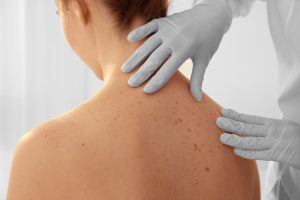
What Is It?
Cancerous growths develop when the DNA of skin cells experiences extreme damage. This is typically caused by intense exposure to ultraviolet radiation, either from the sun or tanning beds. The damage triggers maladaptive genetic mutations, causing the skin cells to multiply rapidly and form malignant tumors. These often take place in moles but can affect other areas of the skin as well. In fact, when melanoma develops, it often takes the form of a mole, though the coloring can be very different.
Causes and Prevention of Skin Cancer
Genetics, as well as skin type, can cause a person to be more prone to developing this type of skin cancer. The following factors have been shown to increase your susceptibility:
- High mole and/or freckle density
- The presence of atypical moles, age/sun/liver spots or birthmarks
- Having pale or fair skin
- Having red, orange, or light-colored hair
- Getting sunburned fairly regularly
- Frequent exposure to the sun
- Family history of this or other skin cancers
Unfortunately, many of these factors are unavoidable and out of an individual’s control. However, regulating the amount of time you spend in the sun, as well as practicing proper skin care strategies when in the sun, are factors that a pre-disposed person can take extra care to control. Avoid tanning beds at all costs, wear clothes that prevent the penetration of the sun’s rays, opt for sunscreen with a minimum 4-star UVA protection rating, and regularly (and liberally) reapply it, especially after swimming.
Skin Cancer Signs and Symptoms
The first signs and symptoms present as atypical moles or irregular marks on the surface of the skin. Dermatologists advise patients to use the ABCDE self-examination strategy in order to monitor their moles and be aware of any changes. Using this method, the most common signs and symptoms can be noticed early, making your overall prognosis better.
- Asymmetry- An easy way to detect asymmetry is to mentally draw a line down the middle of a mole. Do the two sides match? If not, this is a big red flag.
- Borders- Normal (benign) moles have smooth, even borders. A mole with notched or uneven borders is a cause for concern.
- Color- Most moles are an identical shade of brown. Having a variety of shades and/or colors is another big warning sign, especially if those colors include red, white, or blue.
- Diameter- Benign moles typically have a small diameter. The diameters of atypical lesions often exceed the size of a pencil tip eraser.
- Evolving- Common moles do not change much over time. When a mole begins to evolve in any way, contact a doctor.
Skin Cancer Types
There are four types of melanomas. The most common, ‘Superficial Spreading’, presents on the abdomen, back, or limbs. Cells grow slowly at first before spreading across the skin. ‘Nodulars‘ grow more quickly than others and tend to turn red. ‘Lentingo Malignas‘ are less common and typically affect older people. Starting as a type of stain or freckle, it grows slowly and is less dangerous than other types. The final, ‘Acral Lentiginous’, is the rarest type and usually appears on the palms, under the nails, or on the soles of the feet.
Diagnosing Skin Cancer
After noticing changes in the moles or skin, seek medical help immediately. Dermatologists like those at Universal Dermatology & Vein Care can use microscopic or photographic tools to examine the lesion (‘skin abnormality’). If the doctor suspects the presence of skin cancer after this examination, he/she may refer you to a cancer specialist in order to undergo a biopsy, which involves taking a sample of the lesion in order to test the cells in the laboratory. A biopsy will confirm or deny the presence of cancerous traits in your lesion.
Skin Cancer Treatment
For the most part, methods for treating skin cancer are similar to those that treat other types of cancer. However, unlike with many cancers that affect the body internally, skin cancer is easier to remove completely, as it is presented on the outside of the body. Removal surgery is the most common treatment. The procedure involves cutting out the lesion as well as the tissue surrounding it.
If the lesion is too large for this procedure- meaning it covers an extensive area of the skin- a skin graft may become necessary. Skin grafting is a surgical procedure by which normal, healthy skin is removed from one part of the body and is transferred to the affected area. In the event that it has spread to the lymph nodes, a biopsy may also be performed there. Chemotherapy, biological therapy (using drugs to strengthen the immune system), and photodynamic therapy (using drugs, light, and radiation) may also be used in treatment, though they are less common.
Prognosis of Skin Cancer
Although it is considered the most dangerous form of skin cancer, it can still be treated successfully. When recognized and treated early enough, it is almost always curable. However, neglecting to take care of your skin (especially if it is sensitive or relates to any of the risk factors listed above) and failing to monitor and report changes can allow the skin cancer to advance and spread to other parts of the body. Like other cancers, if melanoma spreads, it becomes much more difficult to treat. Preventative care and early action greatly improve your prognosis and, as such, are invaluable tools for beating this type of skin cancer.
If you have any questions about skin cancer prevention or detection, contact the experts at Universal Dermatology & Vein Care!
Lear MoreWhat Are the Benefits of Telemedicine for Dermatology?
Technology has been revolutionizing industries all over the world and dermatology and vein care are no different. This is particularly true where the internet and creating points of access are concerned. In medicine and healthcare fields, telehealth is a growing option. As a dermatology care facility that is always on the cutting edge of technology, we are very interested in the benefits of telemedicine. So, we took a closer look, and here is what we have found.
The Difference Between Telehealth and Telemedicine?
While it is easy to picture video-conference interactions when we hear the term telehealth, it is so much more than that. In a nutshell, telehealth is any kind of medical care that allows medical practitioners to connect with their patients at a distance through the use of telecommunications. It is through telehealth technologies that telemedicine solutions become available. In other words, telemedicine is a specific kind of telehealth option.
What Exactly Is Telemedicine?
The term telemedicine refers to two things:
- A mobile app that allows medical practitioners and their patients to communicate through video chat.
- A software option that allows primary care providers to liaise with specialists at a distance by sending photos of certain conditions for a rapid, remote diagnosis.
Through these telemedicine solutions, patients are able to benefit from remote diagnosis and other kinds of care as they connect with their healthcare providers and dermatologists from a distance.
In What Ways Does Telemedicine Benefit the Field of Dermatology?
Telemedicine solutions can offer lots of benefits to dermatologists and their patients. Telemedicine solutions provide dermatologists and patients with options to stay connected even when they are miles apart. For example, there is no need for a patient to be in the room for a doctor to diagnosis them or follow up with a treatment. As such, we are able to provide faster, more rapid care solutions in a convenient and easily accessible way. This includes catching things like skin cancer more quickly.
7 Benefits of Telemedicine Remote Diagnosis Solutions for Dermatology
1. Rapid Service Delivery
Telemedicine offers the ability to send files – like reports or photos of skin spots – and have responses in the space of minutes. This can connect patients with both their primary care practitioner and specialists like dermatologists quickly and simultaneously. Consequently, patients can receive the best treatment possible from a collaboration between two or more doctors.
2. Privacy and Convenience
Through being able to have their dermatology consultation and diagnosis performed remotely, patients have the convenience of seeing their dermatologists from the privacy of their own home. Although all in-office dermatology appointments are private and confidential, patients may feel more comfortable divulging their ailments in their own homes.
3. Accessible Care
Telemedicine also allows a specialist to monitor a patient remotely if need be. For example, patients living in rural communities or who face other accessibility problems (like elderly patients with mobility issues), will now have more accessible care. Patients in these circumstances no longer have to worry about feeling “cut off” when they can be connected through telemedicine.
4. Rapid Emergency Care
There are times when you or a loved one may have a dermatological emergency that you will want to have assessed right away. In cases like these, telemedicine provides great options for both you and dermatologist. Being able to check in with your dermatologist and/or your primary care physician right away can be comforting. Even if you have already made your way to your primary care physician, he or she can easily check in with your dermatologist concerning the situation to provide you with a rapid solution.
5. Better Treatment Follow-Up and Patient Care
With telemedicine, dermatologists are able to check in with their patients more regularly. As a result, this improves the overall care experience for patients and their dermatologists. As all patients respond to treatments differently, this type of care helps providers monitor your treatment course and make any adjustments if needed.
6. Increased Engagement
Now that patients can connect with dermatologists more conveniently through telemedicine, many do so more frequently. Knowing they can readily reach their dermatologists may prevent them from hesitating to seek treatment. This can result catching some conditions before they progress.
7. Reduced Care Costs
Telemedicine solutions help reduce care costs for both patients and their dermatologists. The cost of accommodating patients in care facilities can be significantly reduced if we can treat them remotely. The costs of traveling to care facilities for treatment can be significantly reduced for patients as well.
Contact Us Today!
If you would like more information on telemedicine and dermatological care, contact our office. Our team will be happy to assist you with any questions you may have.
SaveSave
Lear MoreSkin-Care Tips for Children
The skin is the largest organ of the body, so it’s essential to teach your child some important tips to maintain a healthy complexion. Establishing a solid skin-care routine will help prevent certain issues in the future. Kids are constantly exposed to high levels of dirt and germs, so it’s crucial that they learn how to properly care for their skin. Starting early will ensure that they will continue caring for their skin into adulthood. Here are a few things to keep in mind.
Find the Right Products
There are numerous soaps, creams, lotions, and other skin-care products on store shelves. When caring for your child, it is important to avoid items that contain chemicals like sulfates and parabens. Finding a brand that targets sensitive skin is best. Reading labels will help you to choose a line of products that will work well for your child.
Face Washing
Bar soaps can be incredibly drying, so it is wise to uncover a face wash that is gentle but removes excess dirt and oils. Kids do not want to use products that are sticky or heavy. A mild soap will prevent redness and dryness.
Besides the soap, it is important to understand the right water temperature to use. Although many people believe that hot water is best for pores, it is actually better to use lukewarm water. Hot water often disrupts skin’s natural oils.
Preventing Dry Skin
It is essential to moisturize your child’s skin, especially since dryness is a common issue with youngsters. Vaseline is an excellent product that does not cause irritation but will prevent dry skin conditions.
Many parents do not realize that it is not necessary to bathe young children every day. Taking a shower or bath three times a week is enough to keep your child clean without harming his or her skin. Also, it is best to avoid hot water. Teach your child to rub gently with a soft washcloth or sponge instead of scrubbing too hard as well.
In the summer months, chlorine or salt water may cause the skin to dry, especially if he or she spends a lot of time swimming in the pool or at the beach. Applying a gentle moisturizer and washing off the salt or chlorine is the key to maintaining healthy skin.
Drink Water
Many children do not like drinking water. However, it is an essential part of their diets. As parents, you must make sure that your kids drink enough water to remain hydrated, especially during the warm months of summer. This is usually the time when children are running wild and sweating. Besides serious health conditions, dehydration can cause the skin to become very dry.
Two easy ways to get children to drink more water is limit their choices (offer them milk or water instead of adding other drinks) and add fruit for a little more flavor! Click here to read more tips on this from Cincinnati Children’s Hospital.
 Pay Attention to the Seasons
Pay Attention to the Seasons
In the winter, children enjoy playing outdoors in the snow. However, it is crucial to keep their skin protected. Always cover their hands and faces so that the wind does not cause burning. Even if it seems to be overcast, sunscreen is essential as well. The sun’s rays reflect off of the snowy conditions and can still cause a sunburn. Since a home’s heat is commonly running full-time during the winter months, the air can be extremely dry. It is wise to run a humidifier indoors so that moisture is restored to the atmosphere. This will guard skin as well.
Things are a bit more complicated during the spring and summer months. These are the seasons when the sun is the strongest. It is vital to use sunscreen on your children at all times. When choosing a product, it is important to look for an SPF of 30 or more. Also, it should protect against UVA and UVB rays. If your child will be swimming, a water-resistant product is recommended.
For maximum sun protection, it is best to apply sunscreen approximately 30 minutes before your child will head outside. Make sure to cover all areas of his or her body, including the hands, neck, ears, and shoulders. Dermatologists advise using an ounce of product to cover the body and reapplying every two hours. Protecting from burns will help to avoid signs of aging in the future and will guard against the development of skin cancer.
The Teen Scene
During the teen years, acne becomes common. Learning how to keep skin clean and choosing the right products will keep breakouts to a minimum.
Normal skin should be washed with a mild soap each day. Dry skin should be cleansed and moisturized to maintain a healthy balance. Oily skin should be cleaned with soap and water. Certain products are available to help dissolve oil as well.
When pimples form, it is crucial to never pop them. Bacteria may spread, or scarring may result. If acne is severe, products that contain benzoyl peroxide may help.
When you want to take the best care of your child’s skin, consult with the experts at our office. We will take time to explain more tips that will help you ensure the healthiest skin for your family. We tend to patients of all ages. If your child is suffering from a skin condition or simply wants to learn a proper skin-care routine, contact us to schedule a consultation today.
Lear MoreWhat Are the Benefits of the Fractional CO2 Laser Treatment?
Treatments Abound
Currently, there are a lot of effective skin care treatments that reduce signs of aging and improve the condition of the skin. These treatments range from using simple topical creams to actual procedures that can be done to improve the skin’s condition. Laser treatments, in particular, are very popular skin care options and the technology used in the treatments continue to evolve—becoming more sophisticated and effective.
The Value of Healthy Glowing Skin
When it comes to skincare, the aim is always to maintain blemish-free, glowing, and youthful-looking skin. This is especially true for the skin on our face as we age. After all, our face is the first thing others may notice about us, so the skin thereof plays an important part in how we feel about our social interactions with others.
Great-looking skin tends to give us more confidence, while the opposite is also true—blemished or aged skin can negatively affect our self-esteem. Everything from fine lines and wrinkles to acne scars and age spots can affect the quality of our skin and our social confidence. It is, therefore, important that we take the steps necessary to take good care of our skin and enjoy the many benefits of proper skin care.
Overview: About the Fractional CO2 Laser Technology
Laser treatments, though more invasive than many topical skin care options are increasingly popular treatments. Laser technology can treat a number of skin conditions. One of the latest options—the fractional CO2 laser—uses the most advanced skin revitalization laser treatment technology and has been shown to produce astounding anti-aging results for skin care patients. In fact, studies prove that the fractional CO2 treatment not only reduces the effects of aging on the skin, but also reverses existing signs of aging, including:
– Acne and other trauma-related scars
– Age Spots
– Wrinkles
– Crow’s feet
– “Smoker’s Lines”
After just one treatment, skin appears significantly healthier, rejuvenated, and smoother than prior to the treatment.
How It Works
The fractional CO2 laser treatment works by using a pattern of carbon dioxide laser beams to treat the skin below the surface. A doctor sends carbon dioxide beams into the skin. The beams create strategically-placed microscopic holes in the skin that allow the body to start producing more collagen. Collagen is the body’s natural hormone that keeps the skin healthy and youthful.
The secret to the effectiveness of the fractional CO2 laser technology rests in the fragmented nature of its treatment patterns. This treatment does not allow its laser energy to affect all parts of the skin at once. Instead, it affects a portion of the skin and not the entire skin’s surface. This allows the recovery time to speed up, thereby enhancing results. Patients are usually fully healed within four to five days on average.
What to Expect With the Fractional CO2 Laser Treatment
The QuadraLASE Fractional CO2 Laser treatment has many important features. For starters, the treatment sessions are not very long. Each session lasts an average of one hour. Additionally, while the treatment is not in any way painful, there are some sensations that patients can look out for. These sensations include a slight sunburned feeling accompanied by some peeling. Thankfully, these symptoms usually pass within the average healing and recovery time of about four to five days.
The results, however, are practically immediate, and patients will notice that their scars, wrinkles, age spots, and other skin conditions are far less noticeable as the skin continues to heal. As time goes on, the skin continues to clear as the newly-produced collagen helps the skin become tight, moisturized, and vibrant. Finally, the QuadraLASE Fractional CO2 laser treatment produces permanent results. Over time, it reduces the need for using over-the-counter topical treatments—making the treatment a real, lasting solution.
Additionally, it is possible to use the fractional CO2 laser treatment on the neck as well. Depending on the patient’s condition, a doctor may use the laser to spot treat specific problem areas. After all, all skin ages and oftentimes, most don’t think about the neck as a prime spot for anti-aging treatments.
As you consider the fractional CO2 laser treatment, remember that this will naturally cost more than everyday over-the-counter options you may already use. That said, it is a worthy investment as the treatment continues to pay for itself in value as time goes on. Having amazing, vibrant, and glowing skin is already worth its weight in gold. Of course, the confidence you get from having that glowing, healthy, youthful skin is the icing on the cake.
Am I a Candidate for Fractional CO2 Laser Treatments?
Science and research back the fractional CO2 laser technology. We offer this treatment because our certified and experienced dermatologists have carefully vetted the treatment and seen real results.
Now is the perfect time to undergo this treatment. Since you spend less time outside and more time bundled up, your skin will be more likely to be protected while it heals. Also, if you have this treatment now, your skin will be beautiful, and glowing when the warm weather hits.
We are not able to treat without first having a consultation with each patient. This helps us guarantee that the treatment will be safe and effective for the individual and his or her needs. We also do the consultations to manage expectations. There is a $50 consultation fee that goes towards the price of the treatment.
Universal Dermatology believes in being transparent with our prices and services. Therefore, we would like to let you know that the price ranges from $1000 to $3100 for eye or lip area only up to entire face, neck, and chest. Insurance does not cover this procedure.
To get started weighing your treatment options, contact our office today.
Lear MoreSclerotherapy: What is it? How Does it Work?

What is Sclerotherapy?
Sclerotherapy is a minimally-invasive procedure that treats spider and varicose veins. Depending on how deep the abnormal vein is under your skin, your doctor may need to use ultrasound technology to see where the vein is located. Then, he or she will inject a specialized solution directly into the target vein. This solution is usually saline-based, but the chemical agent depends on the size of the vessel that needs to be treated.
Sclerotherapy will not only improve the appearance of veins, but it will improve venous blood flow and lower chronic swelling as well.
How Does Sclerotherapy Work?
Injecting the saline solution into a vein damages the inside lining of the vessel. This forms a clot that blocks circulation in the vein. This forces the body to reroute blood flow through healthier veins. The damaged vein will eventually become scar tissue and the body will reabsorb it under the skin. This absorption causes the vein to fade from view.
Who is a Possible Candidate for Sclerotherapy?
Anyone who is in general good health and experiences unsightly spider or varicose veins is a good candidate for sclerotherapy. It can also be helpful for someone who suffers from venous insufficiency and cannot control the issue with the use of compression stockings.
Causes of Spider or Varicose Veins
There are a number of things that increase a person’s risks of developing vein issues.
Genetics. Almost half of the population of people who develop varicose veins have family members with the problem.
Age. As a person gets older, wear and tear cause vein valves to become weak.
Obesity. When a person is overweight, the extra weight strains the veins.
Gender. Women are much more likely to develop varicose veins. Hormones, pregnancy, and menopause increase the risks of development.
Prolonged Sitting or Standing. When a person sits with his or her legs bent, the veins must work harder to push blood to the heart.
What to Expect During the Procedure
When the procedure is about to begin, the patient lays on his or her back with legs elevated. Your doctor will clean the area and then insert the needle. When he or she removes the needle, the doctor will apply compression and then massage the area to prevent blood from entering the vessel. Immediately the following sclerotherapy, the patient will need to stand and walk so blood clots do not form.
Is Sclerotherapy Painful?
Sclerotherapy does require an injection into the skin, so the patient may experience some stinging or cramps when the syringe is inserted. Also, some feel pain from the saline solution being injected into the vein. The procedure should be otherwise pain-free unless a rare difficulty occurs.
All medical procedures pose a risk, but your doctor will discuss side effects before deciding if this therapy will work for you. For example, a person may experience hyperpigmentation (darkening of the skin), pain at injection site, temporary swelling, or an allergic reaction. In severe cases, a person may experience nerve damage.
Recovery and Aftercare of Sclerotherapy
Sclerotherapy is performed on an outpatient basis; therefore, patients do not require hospitalization. Following the treatment, the patient will need to wear compression dressings for up to three weeks. A follow-up appointment after this recovery time will determine if further action is necessary.
After treatment, veins will fade within a few weeks. On rare occasions, it may take more than a month to see total results. More than one treatment may be necessary for larger veins.
Is Sclerotherapy Covered by Insurance?
Since sclerotherapy is often linked to the correction of spider veins, some see it as purely cosmetic. In these cases, most insurance companies will not cover the elective procedure. However, it can be used for other medical purposes, and if so, a doctor must document a patient’s condition. An insurance provider may cover the procedure if they understand the problems associated with a malfunctioning deep vein.
If you suffer from varicose veins or spider veins, you may wish to consider sclerotherapy. Contact us to ask any additional questions you may have or to schedule a consultation where our providers will meet with you to discuss the issues you are facing and establish a plan of action.
Lear MorePatch Testing for Contact Dermatitis
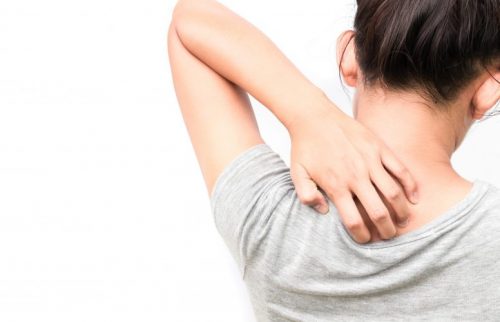
Allergic Contact Dermatitis
Allergic contact dermatitis is an immune response to an allergen. It can be itchy and can also make the skin dry, flaky, or scaly. However, the symptoms associated with this allergic reaction depend on your skin’s sensitivity. This substance may bring about other symptoms including oozing blisters, redness, leathery appearance, burning sensation, hives, sun sensitivity, and swelling.
Patch Testing and Why It’s Necessary
If you already know what you’re allergic to, that’s great! It will be much easier for you to avoid these chemicals and ingredients. However, if you came in contact with an allergen by accident, it is best to consult with a dermatologist to get the skin treatment you need. For those who suddenly develop patches of dermatitis due to unknown causes, patch testing is necessary.
Metals, leather, rubber, and cosmetics, for example, contain a number of chemicals that can cause allergic reactions. Through patch testing, you and your doctor will be able to identify the allergen. This will help your dermatologist determine which treatment is right for your skin and will be able to help you avoid the allergen in the future.
How Does Patch Testing Work?
An experienced dermatologist will perform the patch test. During the test, small amounts of certain substances are applied to your skin and secured with hypoallergenic tape. These are usually placed on the upper back to ensure they are not disturbed. You will need to come back after 48 hours to get the patches removed. At this time, your dermatologist will do a thorough examination of your skin’s reaction to the substances. Two additional days later, the specialist will examine the spots again to see if there is any delayed reaction.
Dermatologists have a standard set of substances they test on individuals with suspected Allergic Contact Dermatitis. This includes Balsam of Peru, benzocaine, lanolin or wool alcohols, rosin, rubber accelerators, quaternium-15, formaldehyde resin, formaldehyde, p-tert butylphenol, plants, paraben mix, paraphenylenediamine, nickel, neomycin, fragrances, imidazolidinyl urea, ethylenediamine, cobalt, epoxy resin, clioquinol, and chrome. This list includes additives in leather, ointments, clothes, and other items we come in contact with on a regular basis.
Please note that if your dermatologist suspects other allergens, more patches will be added for testing. This can include substances that you come in contact with in your workplace or substances contained in your specific makeup or creams. Bringing in samples of the products you use would also be useful to your doctor, especially if you suspect one of these products is causing the allergic reaction.
Test Results
Once the test results are in, your dermatologist will be able to give you details on what caused your recent allergic reaction. Your dermatologist will give you advice on how to avoid the substance you are allergic to. If the results reveal that you do not suffer from allergic contact dermatitis, you will be able to rule it out and your doctor can proceed with other tests to determine what is causing the skin irritation.
Irritant Contact Dermatitis
If an irritant caused the contact dermatitis, the symptoms are slightly different. This can include skin blistering and cracking because of extreme dryness, stiff or tight skin, swelling, ulcerations, and open sores. This form of contact dermatitis is caused by skin injuries due to environmental factors, chemicals, or friction. The severity of the condition can vary depending on the strength of the irritant, frequency or length of exposure, and skin susceptibility.
Solvents you have come in contact with including detergents, metalworking fluids, adhesives, acid, alkalis, friction, and water can also cause it. Sometimes, two or more of these irritants act together in irritating the skin.
Anyone can experience irritant contact dermatitis if they come into contact with an irritant. However, those who suffer from atopy (a predisposition to allergic reactions) are more susceptible to the condition.
Testing for Irritant Contact Dermatitis
Because this condition can coexist with allergic contact dermatitis, your dermatologist may decide to perform the test to rule this out. The rash typically heals on its own as long as you avoid exposure to the irritant, but special treatment is available if needed. Be sure to contact your dermatologist to get the right treatment for the condition.
If it’s necessary that you handle the irritant again, make sure to cover up and protect your skin. However, try to avoid them altogether if possible.
Patch testing is important to prevent and treat redness, irritation, and itching caused by contact with an allergen or irritant. If you think you may be experiencing contact dermatitis or would like to prevent it, contact us today.
Lear More
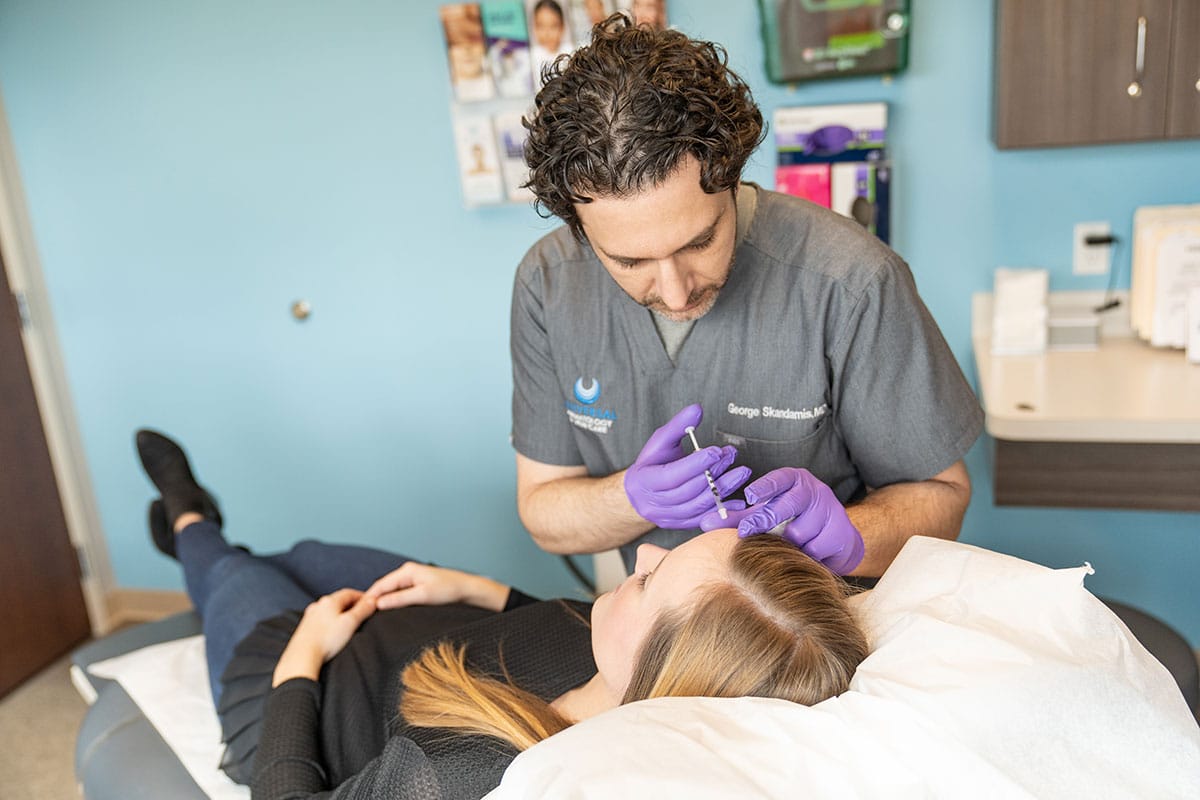 Our Dermatologists
Our Dermatologists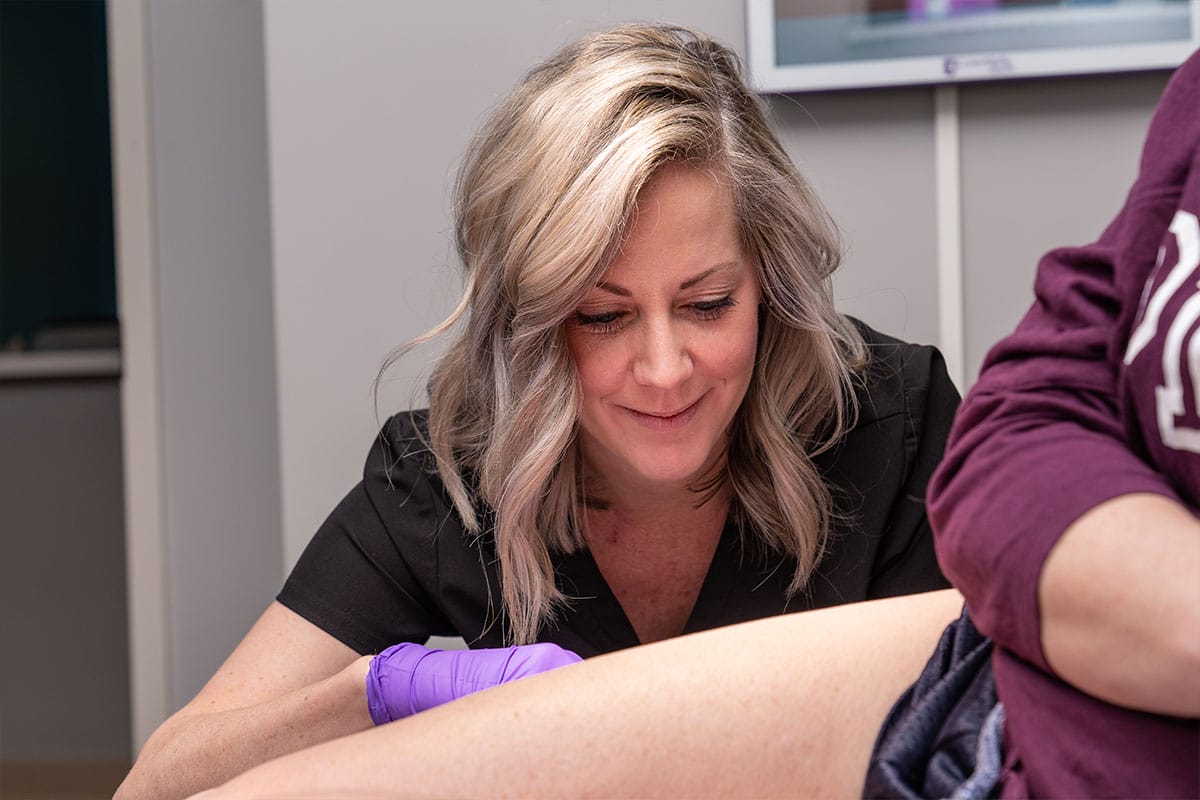 Our Providers
Our Providers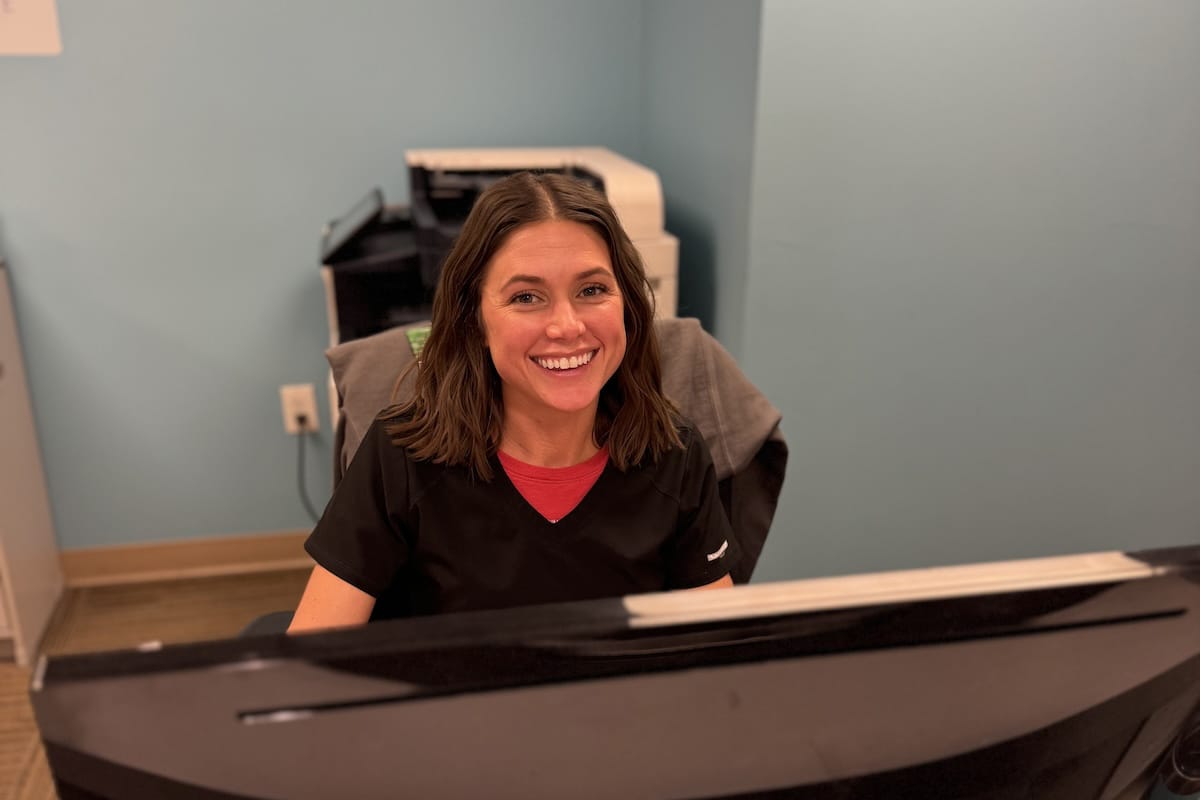 Our Staff
Our Staff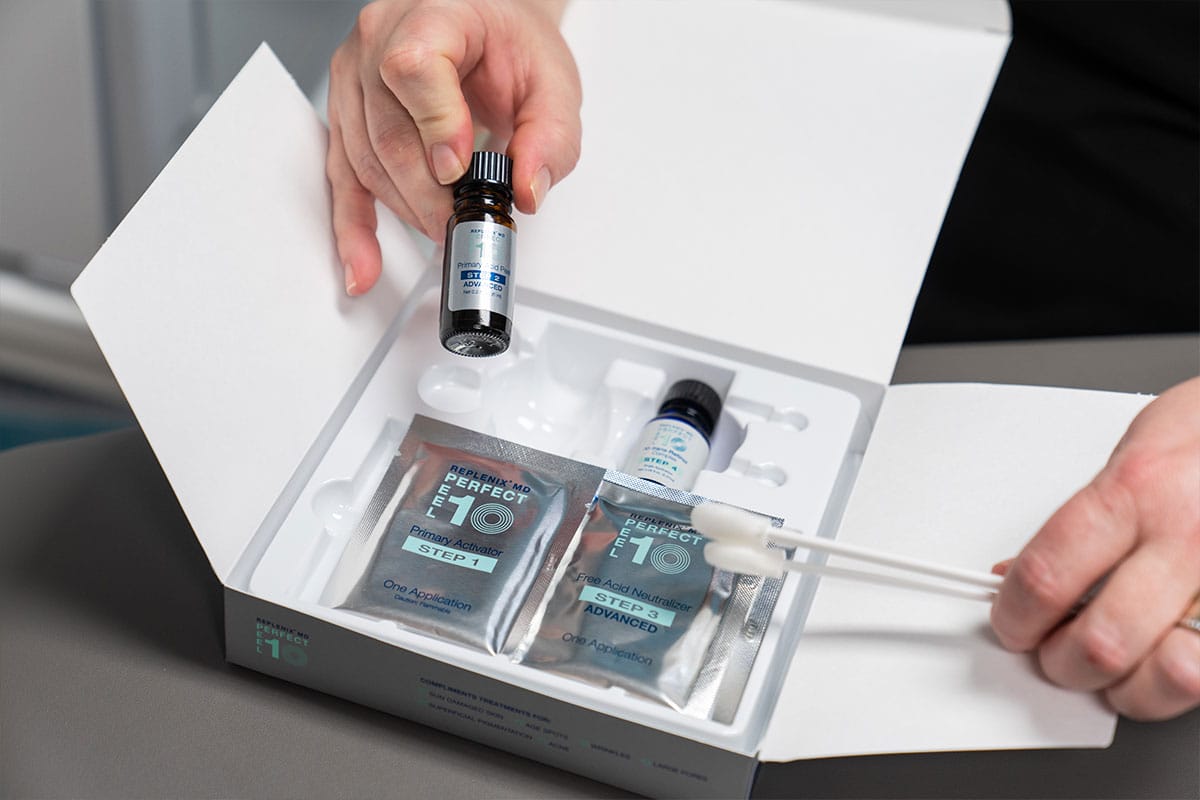 Specials
Specials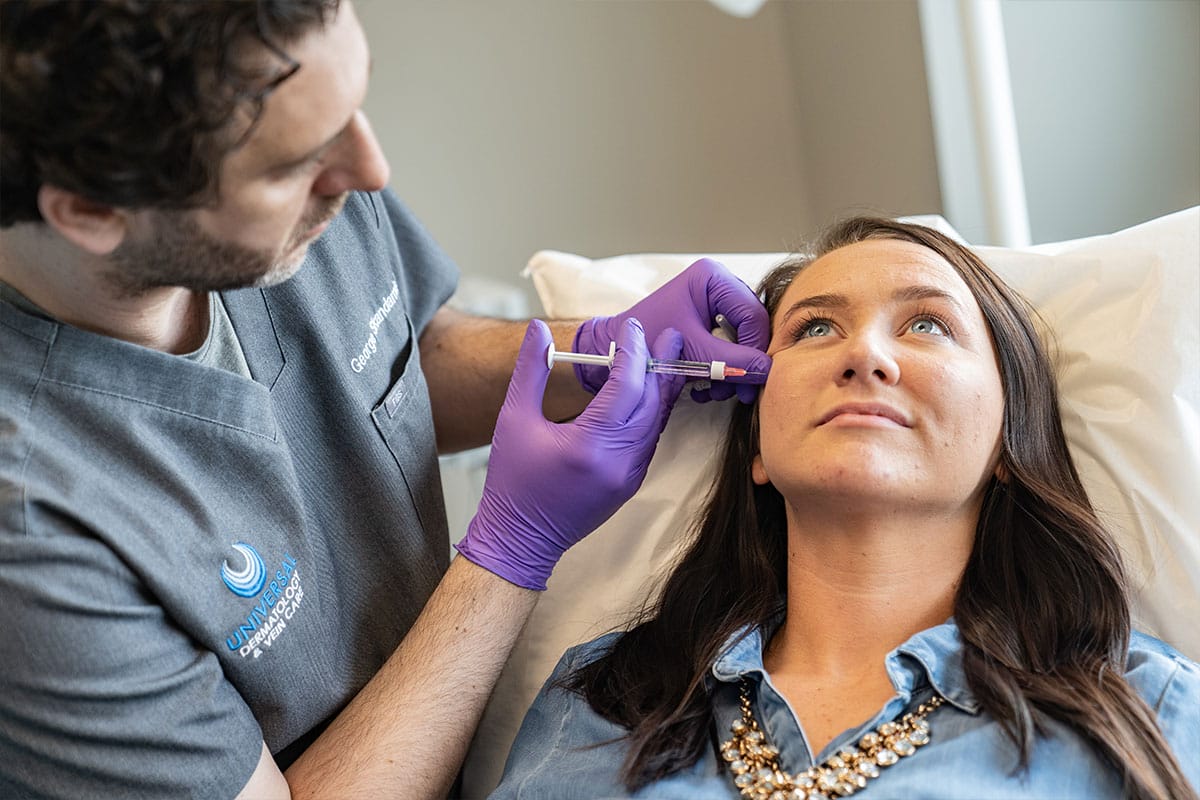 Financing
Financing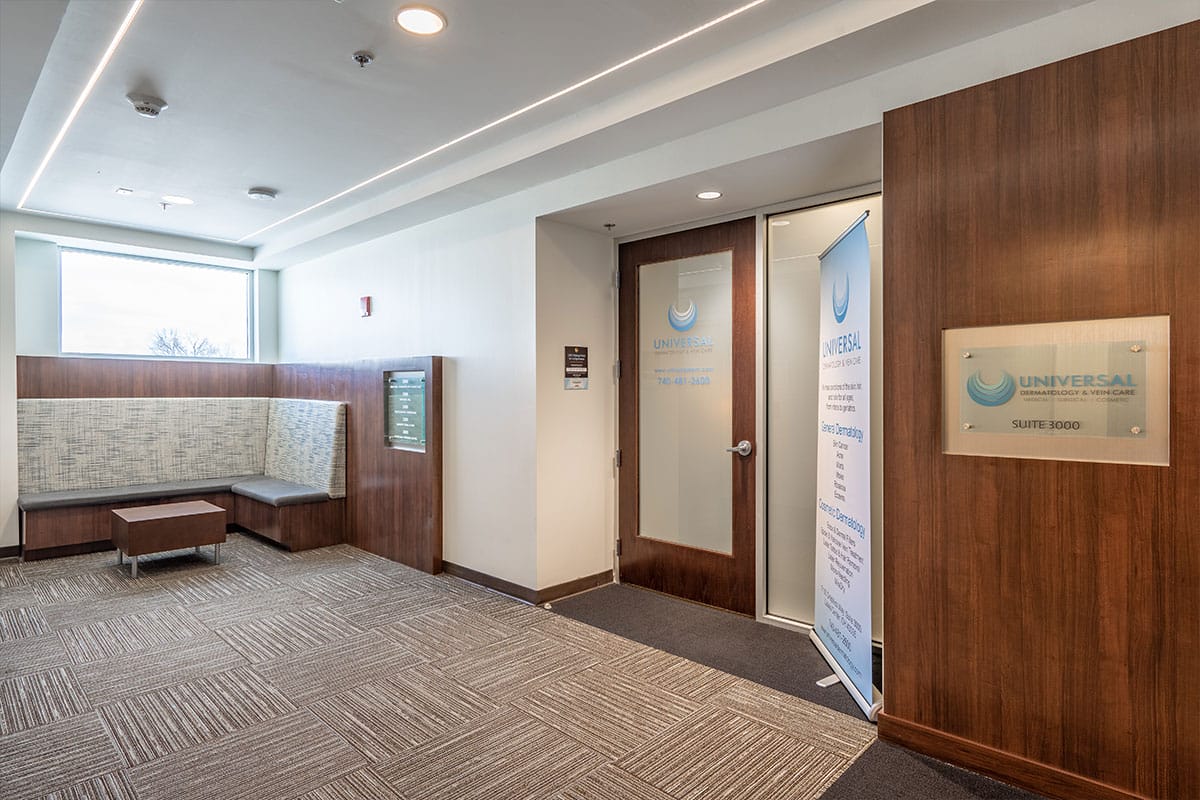 Pay Bill Online
Pay Bill Online
